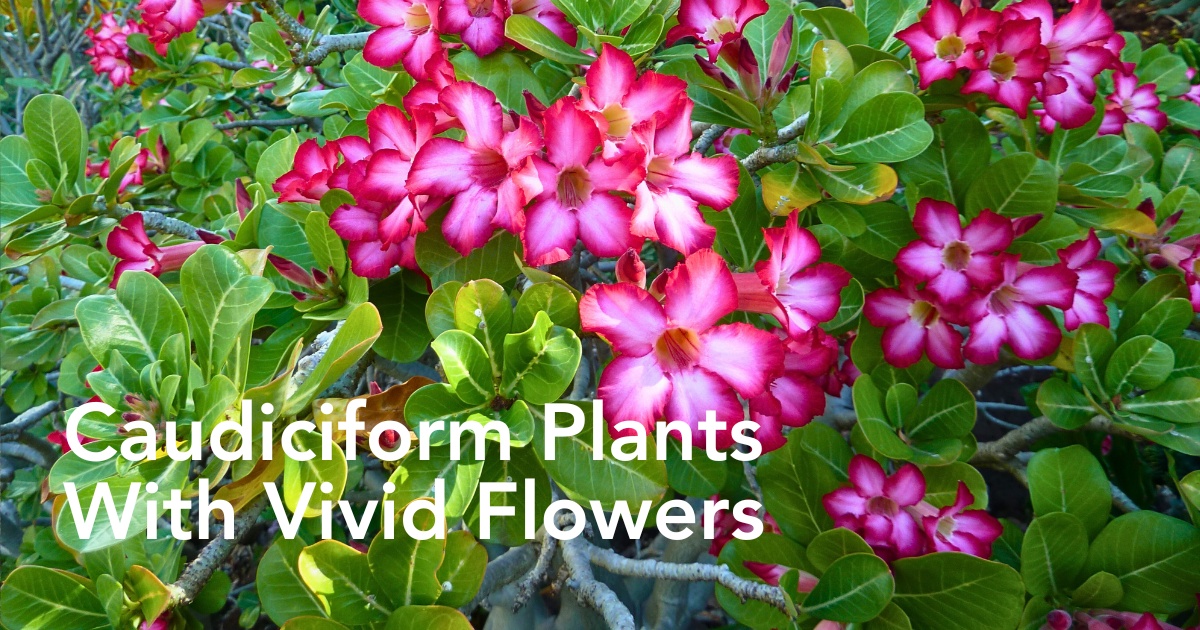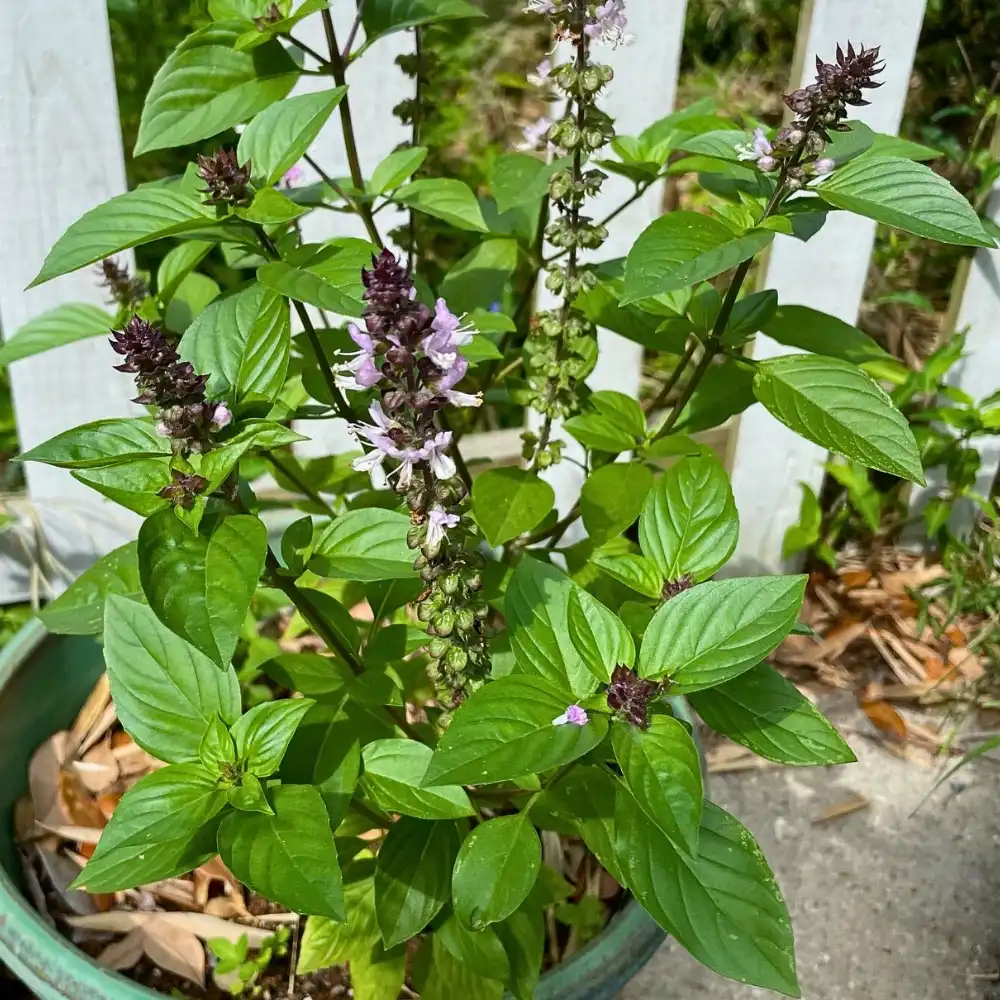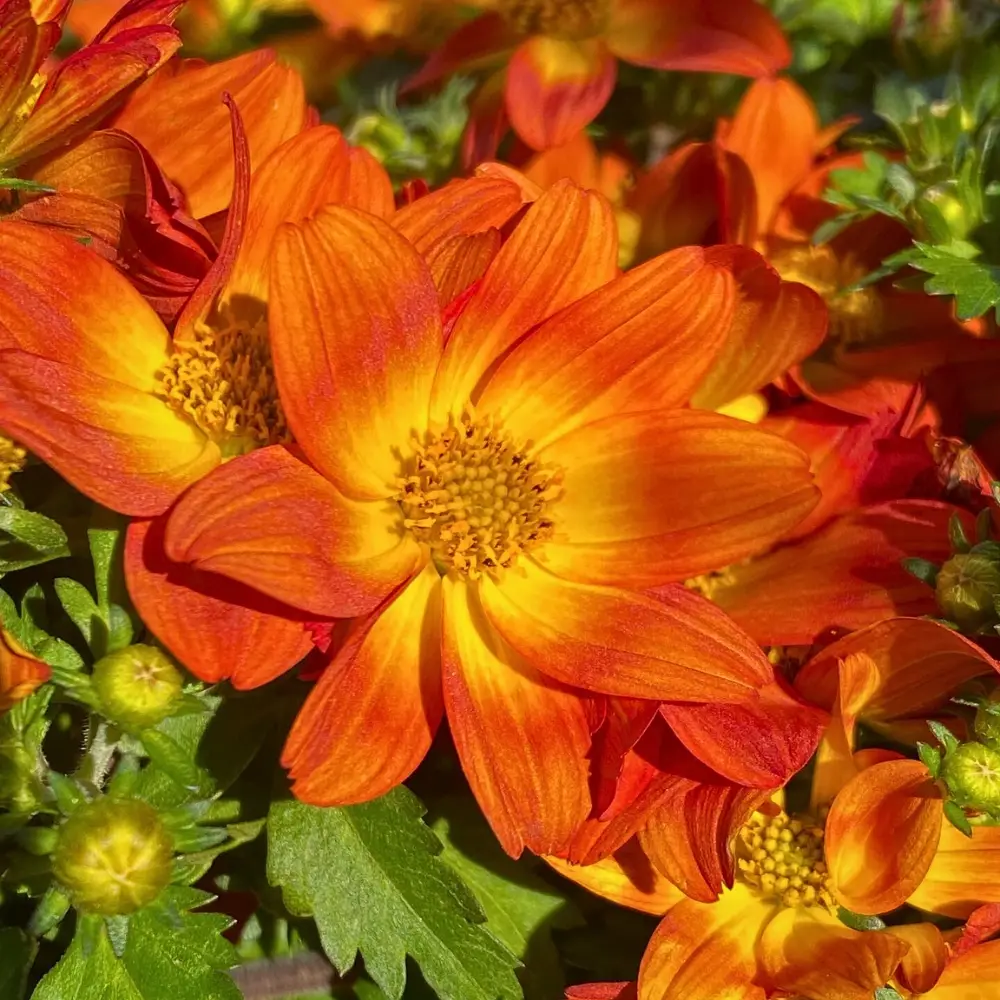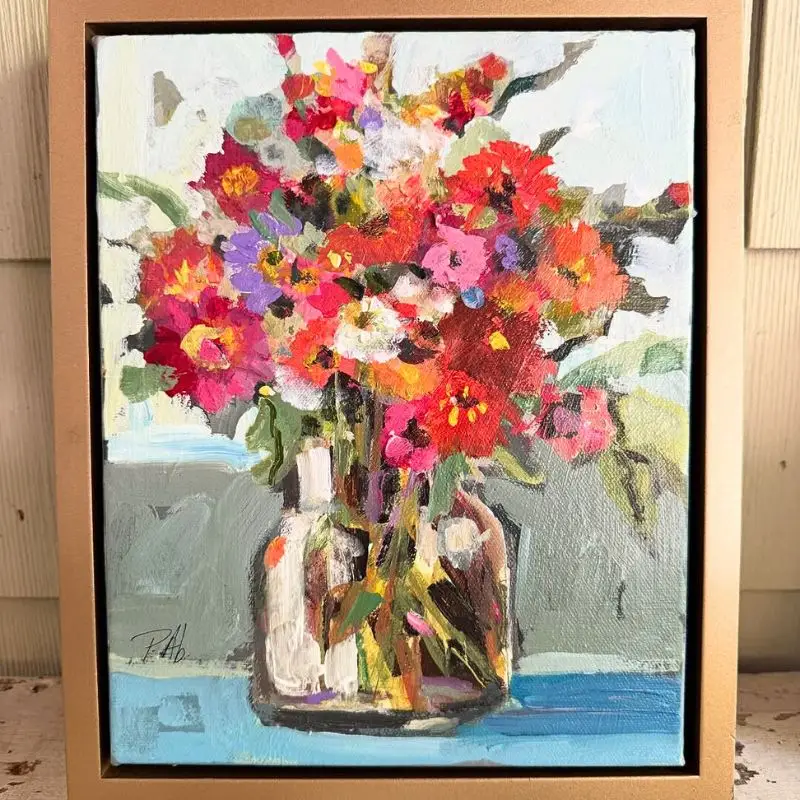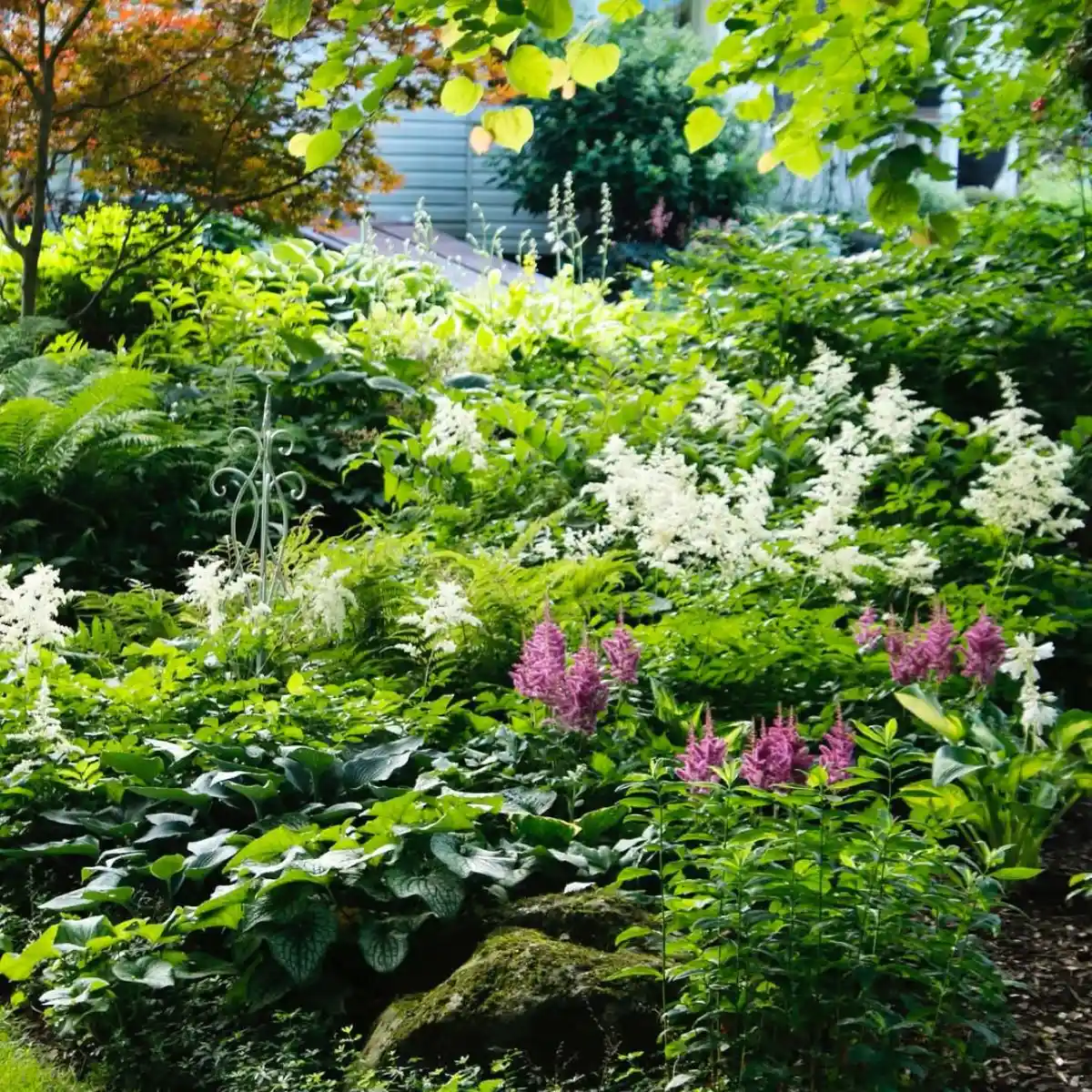Adenium obesum, commonly known as the desert rose, is an elegant and distinctive succulent native to Africa and the Middle East. This stunning plant also goes by other names like Impala lily, Sabi Star, and Mock Azalea. The desert rose plant is unique due to its striking flowers that come in colors like red, pink, white, yellow, and gold. But aesthetics aside, with proper cultivation and care, this plant can be the centerpiece of an indoor or outdoor plant collection.
How to Grow and Care for Adenium Obesum Plants
The desert rose plant features a thick succulent caudex or trunk, which works as a water storage system. A thin caudex indicates underwatering. Depending on your location, this remarkable plant can thrive outdoors or as a houseplant. However, it prefers warmer temperatures in USDA Plant Hardiness Zones 11-12 and is highly susceptible to frost and cooler temperatures. You can learn more about caudex plants.
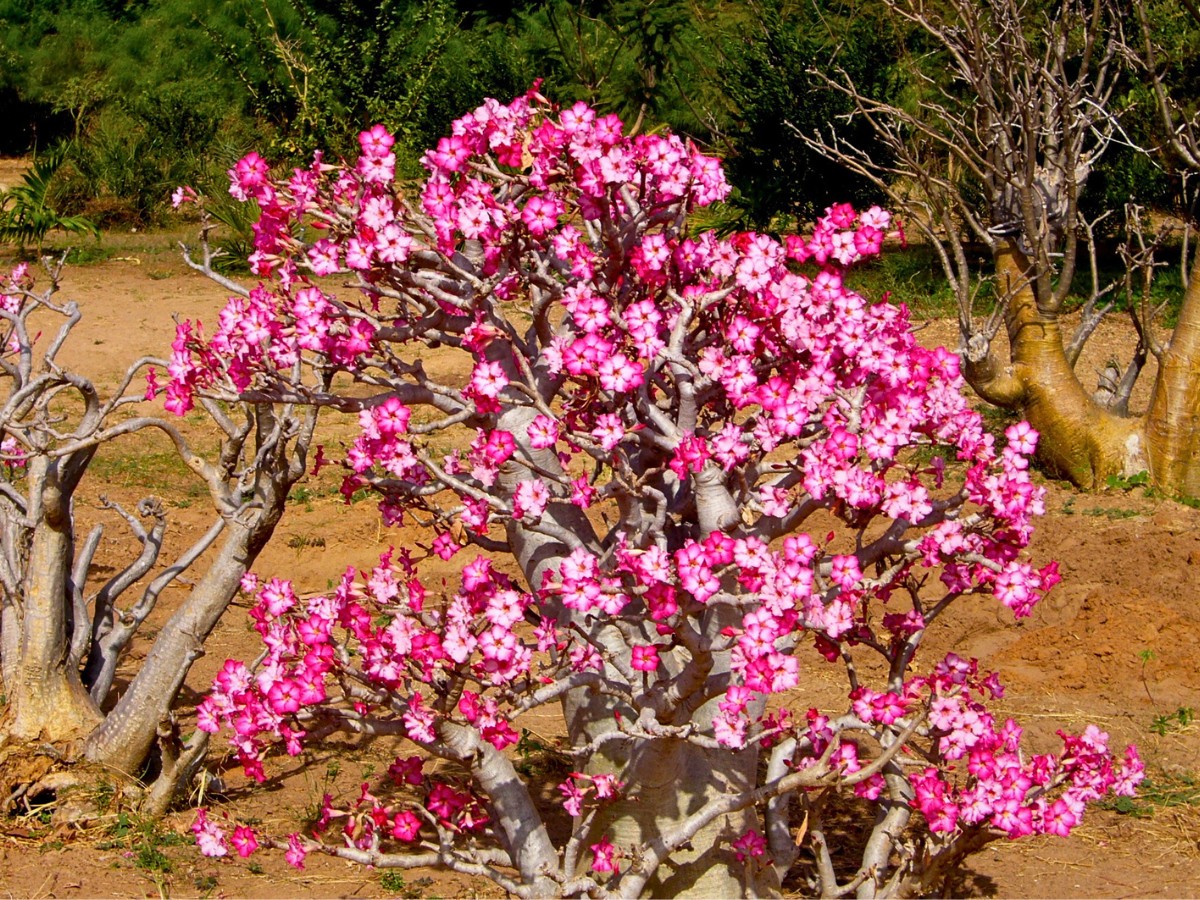
Also, despite being relatively easy to maintain, Adenium obesum growth and care require attention to specific needs. The plant can be unforgiving if exposed to cold temperatures, overwatered, or denied access to at least six hours of bright sunlight. Spring is the ideal season to grow this desert rose plant indoors if you are in a cooler region and outdoors if temperatures stay above 4.4°C (40°F).
Nonetheless, regardless of whether you're a seasoned gardener or beginner, learning how to suitably grow and care for Adenium obesum plants remains straightforward when you understand their basic needs. Following this care guide will help your plant thrive and produce those beautiful, vibrant flowers.
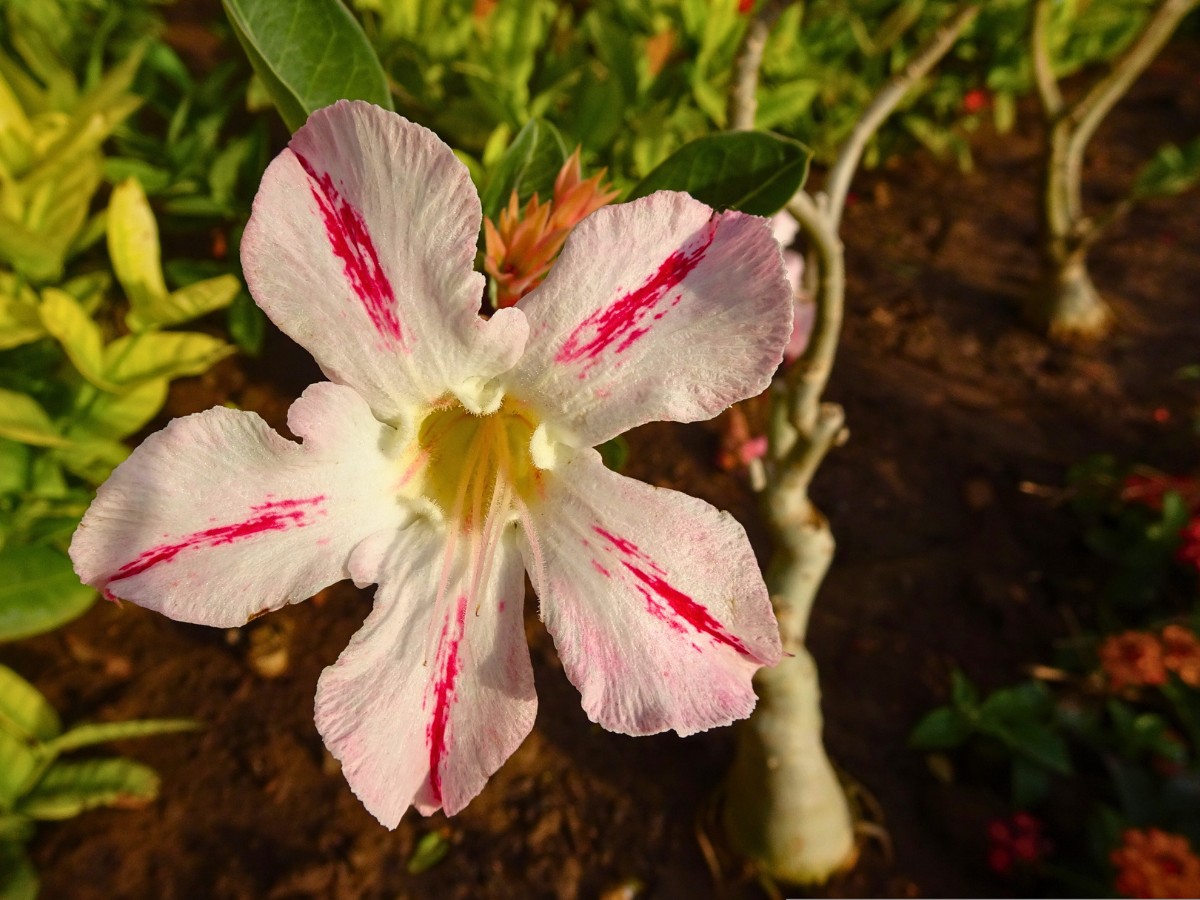
Soil Requirements
A well-drained soil mix is essential for ideal Adenium obesum care. Sandy or cactus soil mixtures work perfectly. To enhance optimal results, maintain soil pH between neutral and acidic levels, with a minimum pH of 6. Since the desert rose plant prefers minimal moisture, poorly drained soil leads to waterlogging and root rot, which severely affects growth.
Temperature and Humidity
Your desert rose plant will die easily if exposed to freezing temperatures below 4.4°C (40°F). Conversely, your Adenium obesum thrives in warmer temperatures, so understanding the temperature fluctuations in your location is crucial when deciding whether to grow your plant indoors or outdoors. Also, given that the desert rose plant is well-accustomed to dry climatic conditions, humidity isn't crucial, but keeping it low is highly recommended.
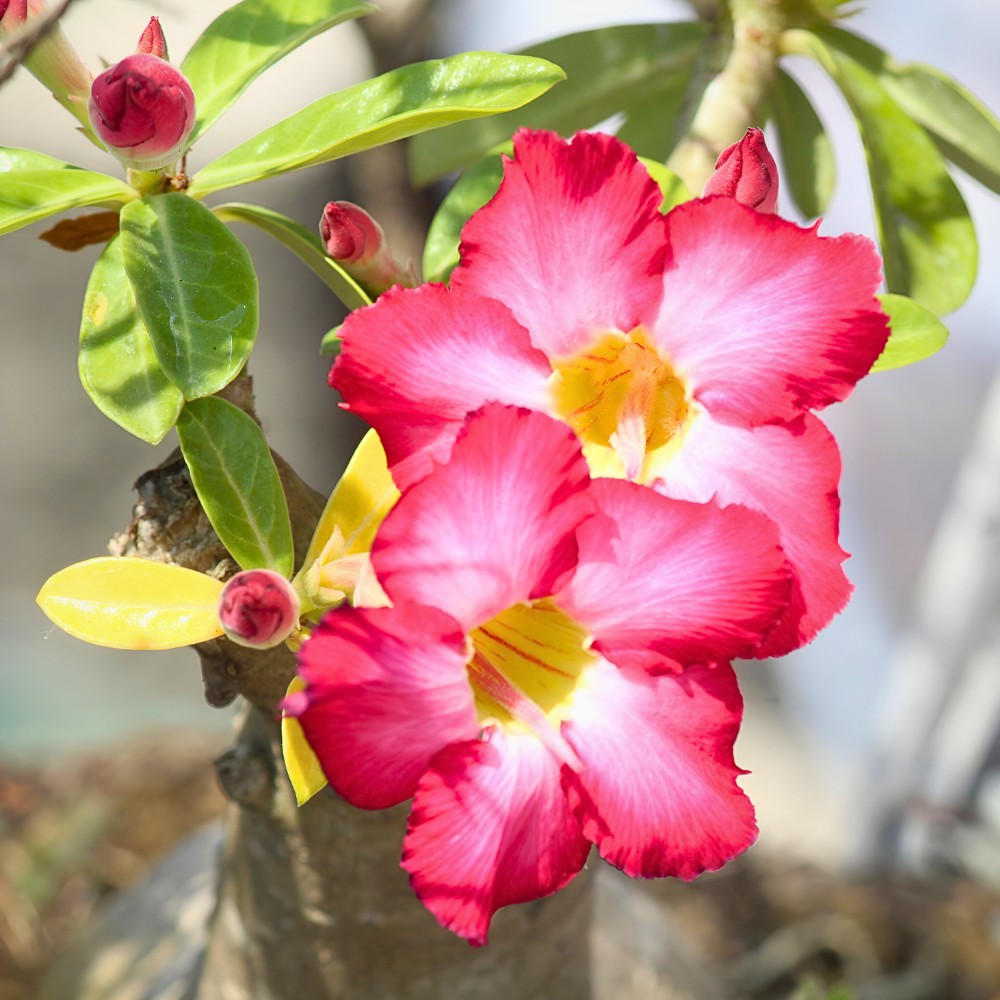
Watering Your Desert Rose
Excessive watering can easily kill your Adenium obesum plant. That is why well-drained soil is crucial for managing water levels. During the spring and summer growing seasons, increase watering slightly, but always check soil moisture before adding more water.
Reduce watering significantly during winter, when the plant is in dormancy. Watering once a month is sufficient to protect your desert rose plant from root rot and eventual death. Regularly check the trunk size; a thick caudex is a positive sign, while a thin one indicates water deficiency.
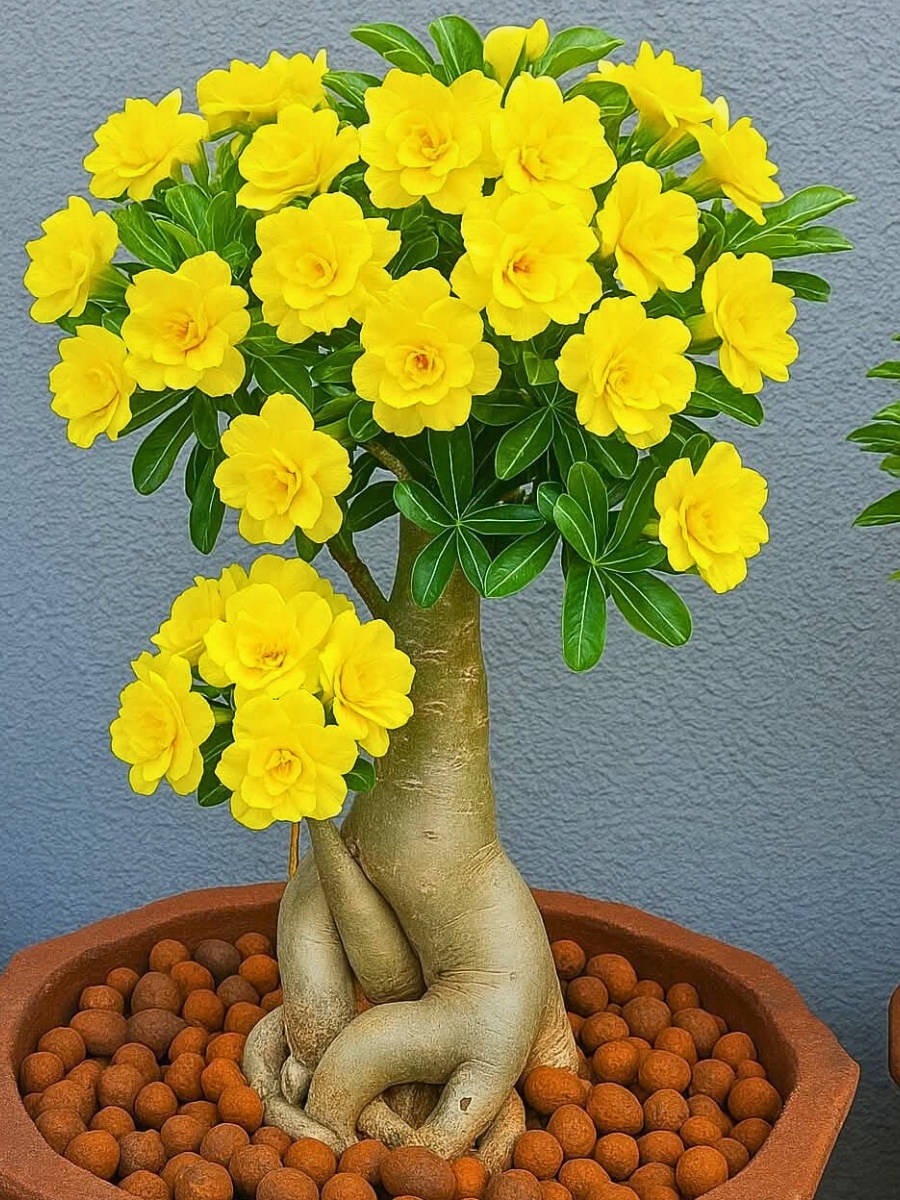
Sunlight Needs
Exposing your Adenium obesum plant to bright sunlight for at least six hours daily is crucial for healthy growth and abundant flowering. If growing this desert rose plant in your garden, ensure taller plants don't cast unwanted shade and protect it from scorching midday sun. For indoor cultivation, identify a location that receives adequate sunlight throughout the day and position your Adenium obesum there for best results.
Fertilizer Application
Fertilizer application during the growing season is vital to stimulate plant growth. Apply a liquid fertilizer monthly to support healthy plant growth and encourage blooms at the right time. Notably, avoid applying fertilizer during winter or dormant periods, as this can harm your plants.
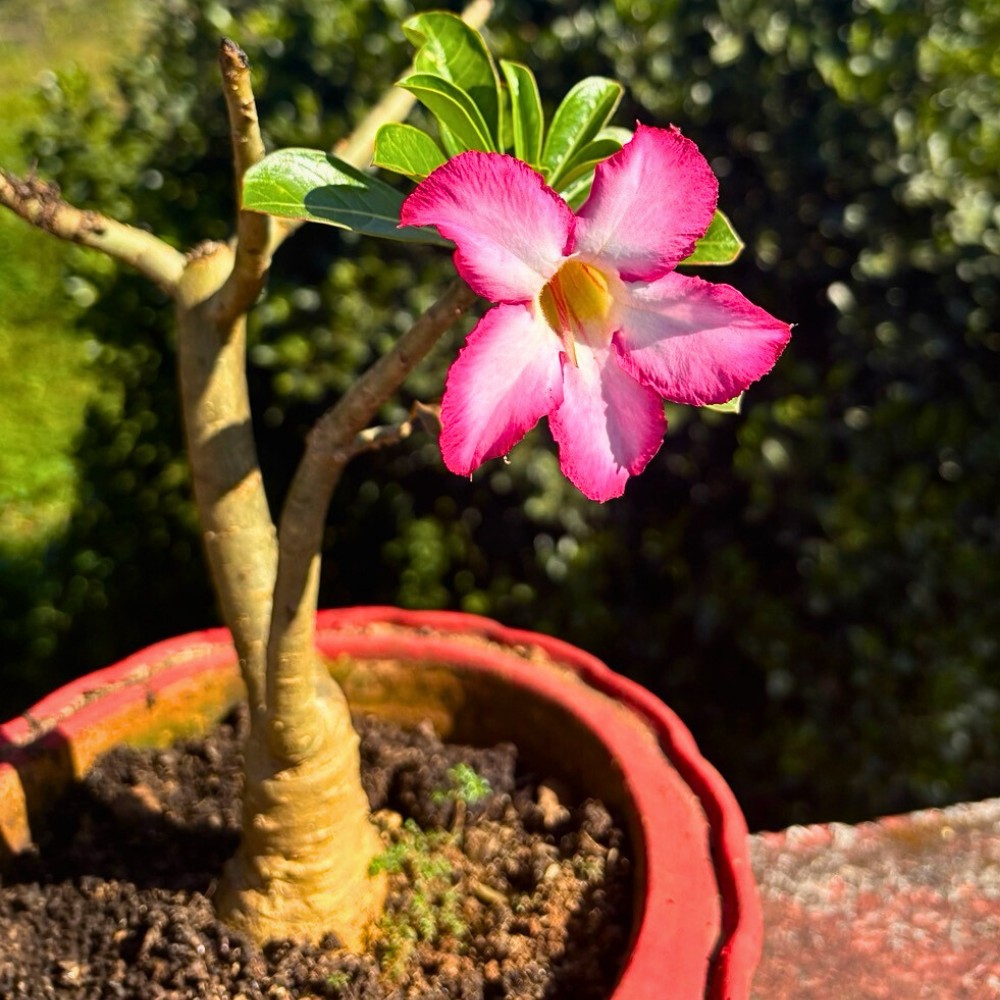
A Guide on How to Grow Adenium Obesum From Seed
For those interested in growing Adenium obesum, propagation from seed is also quite a fulfilling experience. Understanding how to germinate Adenium obesum seeds properly will give you the best chance of success; that is why learning how to germinate and grow the Adenium obesum plant from seed generally begins with proper germination techniques. To achieve that, here are a few valuable tips:
- Seed selection: Buy fresh seeds from reputable sources, as viability decreases with age.
- Pre-soaking: Soak seeds in lukewarm water for 2-4 hours before planting to soften the seed coat and improve germination rates.
- Planting medium: Use a well-draining seed-starting mix or a combination of perlite and peat moss.
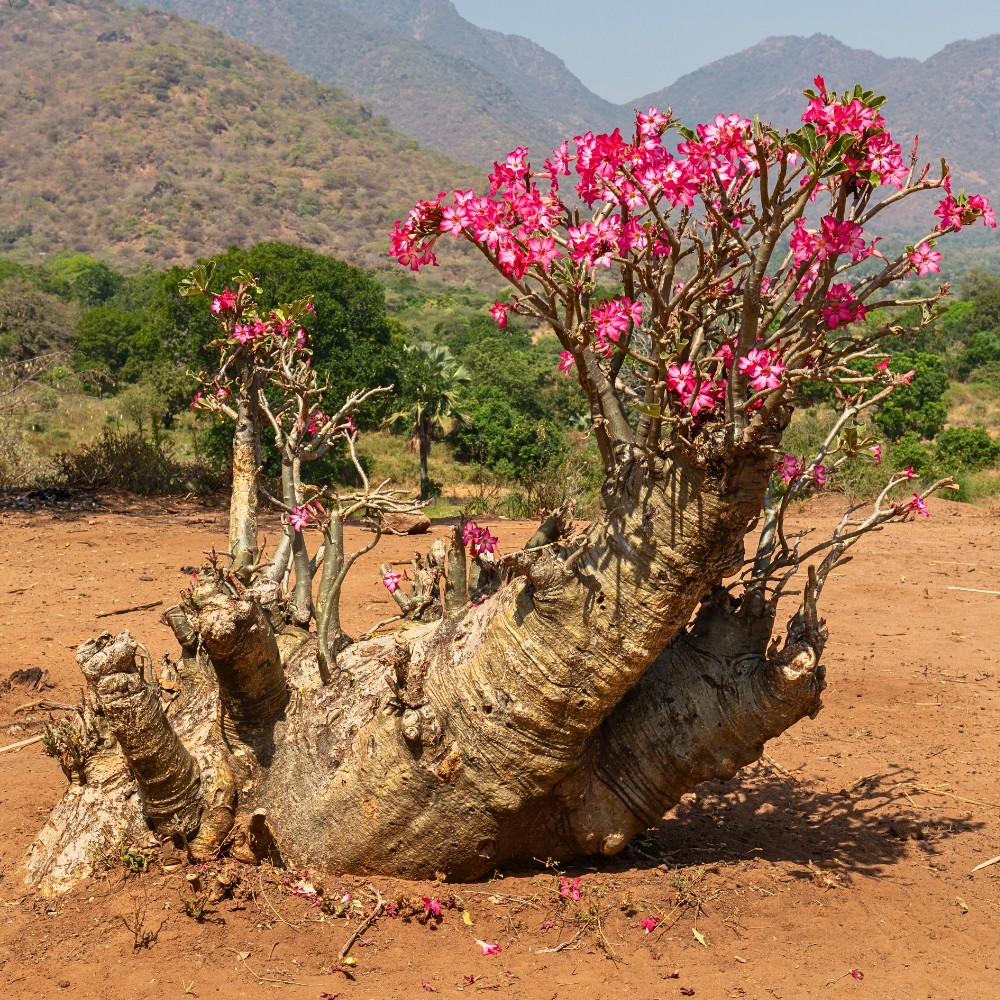
- Planting depth: Plant seeds about 1/4 inch deep in your growing medium.
- Temperature: Maintain consistent warmth for optimal germination. Use a heat mat if necessary.
- Moisture: Keep the growing medium slightly moist but never waterlogged. Also, mist it regularly.
- Light: Once seeds germinate (typically 3-10 days), provide bright indirect light.
- Transplanting: When seedlings have 2-3 true leaves, transplant them into individual containers filled with well-drained cactus mix.
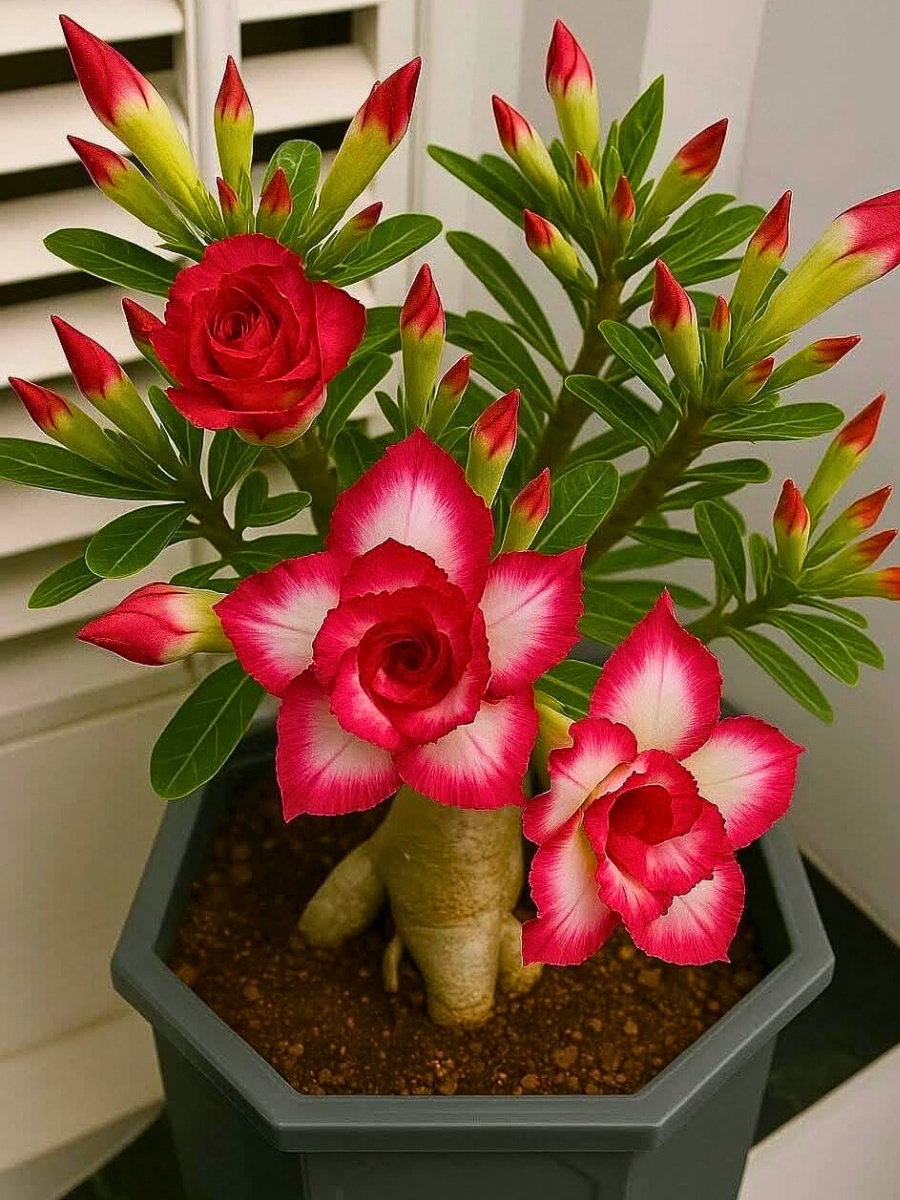
Notably, when learning how to grow Adenium obesum seeds, patience is essential. The seedlings grow slowly initially, but will accelerate once established. The best part is that this approach allows you to cultivate multiple plants and potentially discover unique color variations.
Repotting Your Desert Rose Plant
Once it has grown, consider repotting the Adenium obesum when it becomes root-bound. If you don't wish your desert rose plant to grow larger, avoid repotting altogether, as this slows continuous growth.
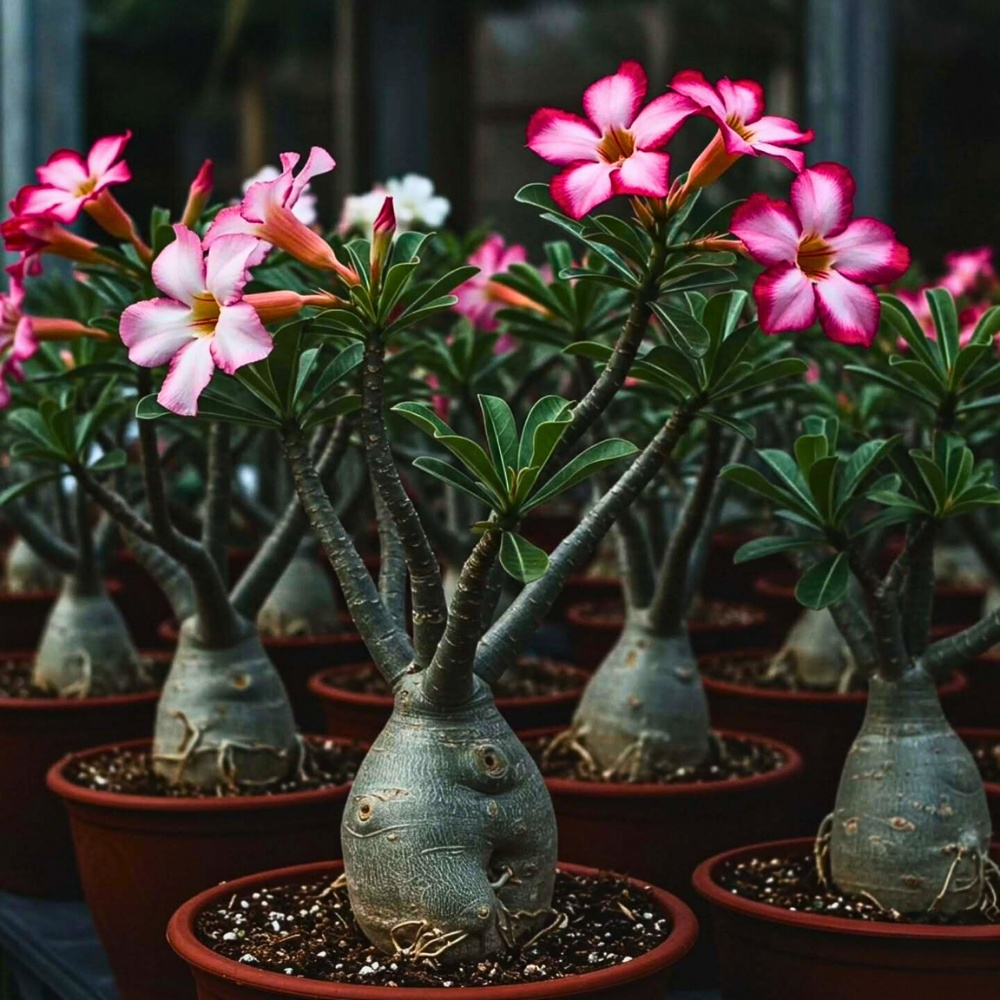
But if you want to repot your desert rose plant, then you may follow this simple process to avoid damaging the plant or its roots:
- Repot towards the end of winter or the beginning of spring.
- Wait until the soil dries out completely, as dry soil makes it easier to detach the plant from the container.
- Gently remove the plant and eliminate any soil stuck between the roots.
- Carefully check for signs of root rot or dead roots, using sterilized secateurs to cut them off before placing the plant in a new, more spacious container.
- And after repotting, don't immediately water your desert rose plant, allowing it several days to dry and adjust to the new container before resuming regular watering.

Common Pests and Diseases Affecting Adenium Obesum Plants
Like most desert plants, desert rose is hardy and resistant to pests and diseases. However, scales, mealybugs, and spider mites are the most common pests you may encounter. Rubbing affected leaves and stem surfaces with alcohol or washing with soapy water typically eliminates these pests.
However, pests and diseases are not the primary issues when caring for Adenium obesum; water management may be the most critical factor. Overwatering weakens the plant, creating favorable conditions for pests and diseases to attack your Adenium obesum.
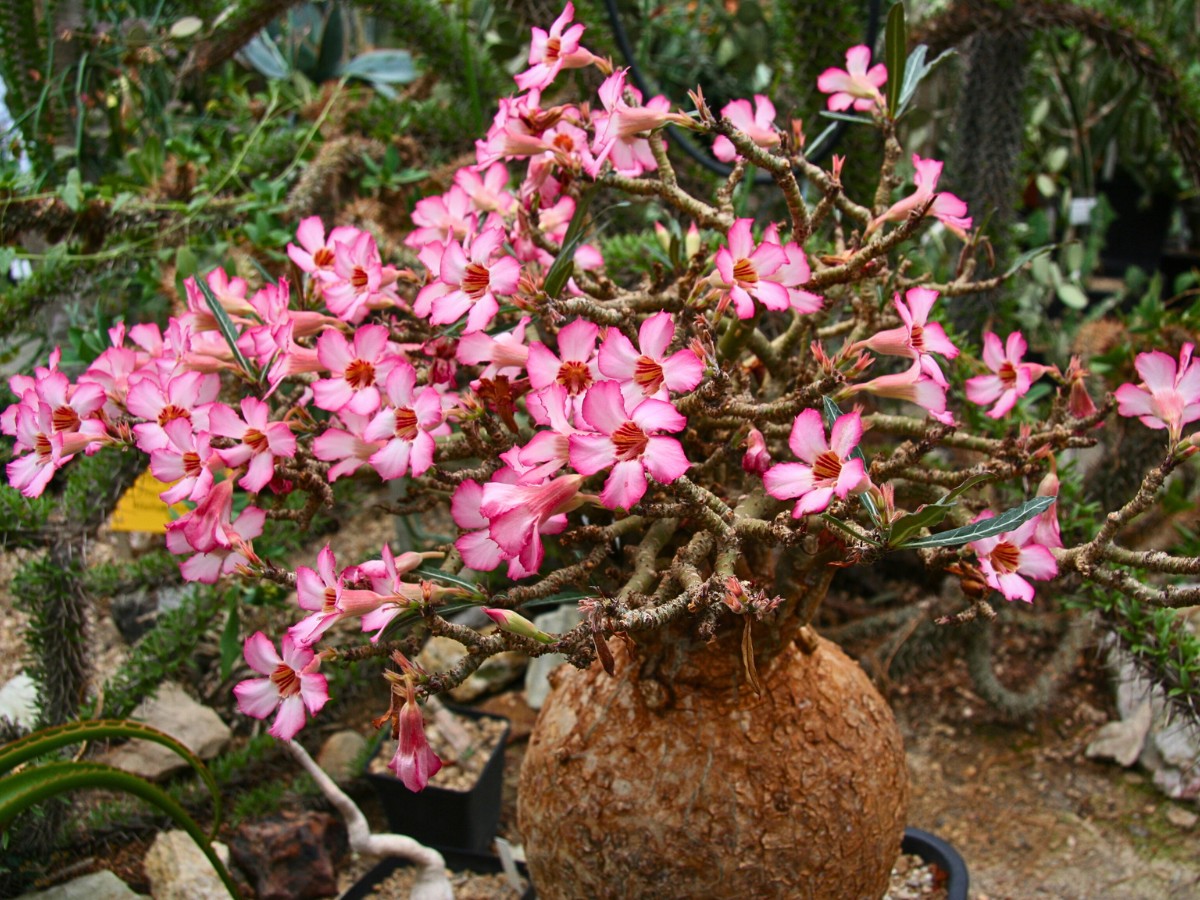
Common signs of overwatering include leaf dropping and yellowing. In most cases, damage can be mitigated by removing rotten roots and repotting immediately. Any delay may result in plant loss.
Additional issues include powdery mildew infestation, which is common when a desert rose plant is grown as a bonsai. When leaves and stems bunch up, they create a favorable environment for this powdery mildew. Spray water or fungicide to manage the infestation, but creating spacing between stems and leaves is necessary for prevention.
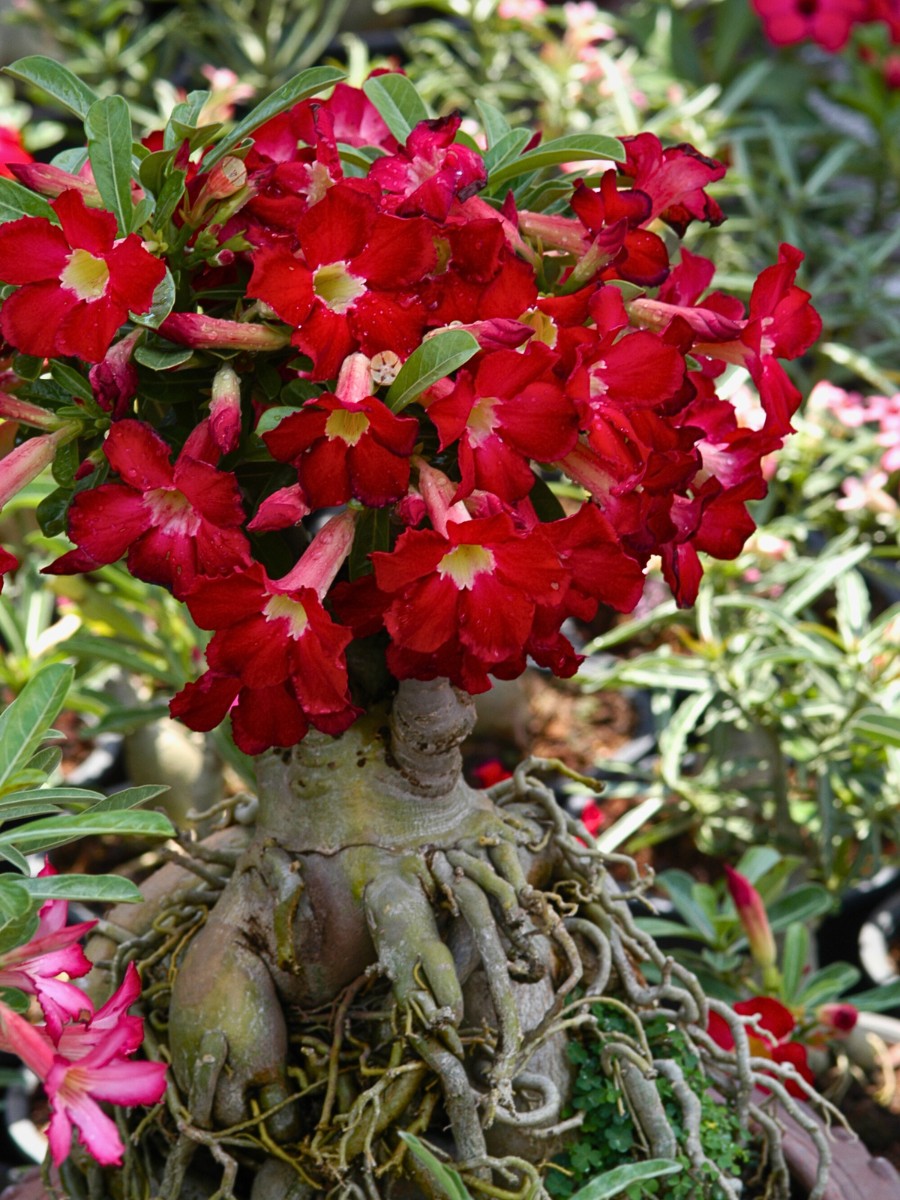
Growing the Desert Rose Adenium Obesum Bonsai for Sale as Bonsai
While the Adenium obesum plant is popular as an ornamental succulent, it can also be transformed into a stunning bonsai specimen. So, for bonsai enthusiasts, searching for the right Adenium obesum bonsai for sale could help you get an excellent option with an array of flowers and natural sculptural form.
Because it grows easily and forms an attractive, foliage-shaped canopy, an Adenium obesum (desert rose) can be easily trained into a bonsai. The plant's thick caudex and branching structure create natural artistic appeal. However, unlike traditional bonsai trees, you will not achieve the same ramified branch structure, and the plant naturally sheds its leaves during winter dormancy.
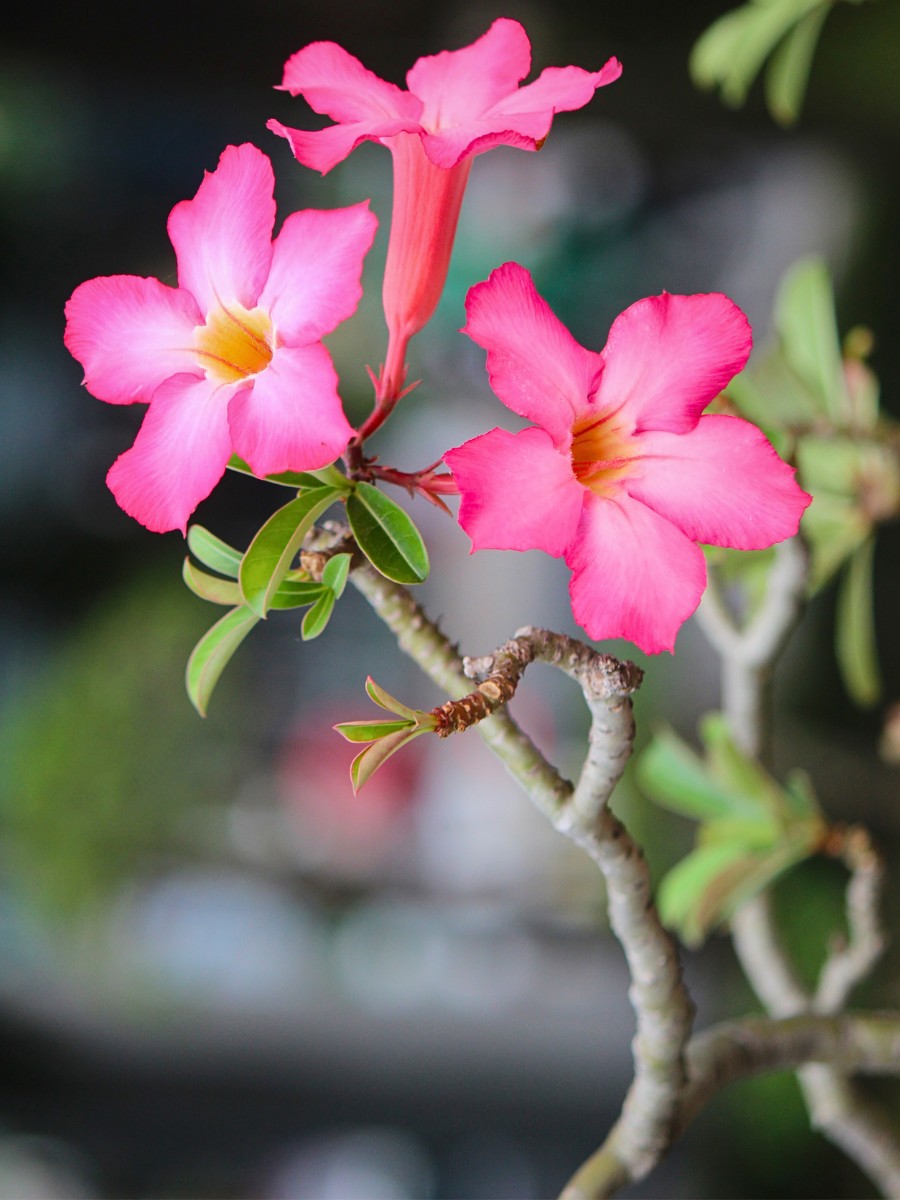
Notably, when shopping for Adenium obesum bonsai, look for specimens with well-developed caudexes and healthy branching. These characteristics will give you the best foundation for creating an impressive bonsai display.
Toxicity Warning for Adenium Obesum Plants
As a member of the Apocynaceae (dogbane) family, which is a large family of flowering plants including trees, shrubs, herbs, and vines, characterized by their toxicity and often a milky latex sap when cut, the desert rose plant produces this milky sap that can be particularly poisonous to pets and humans.
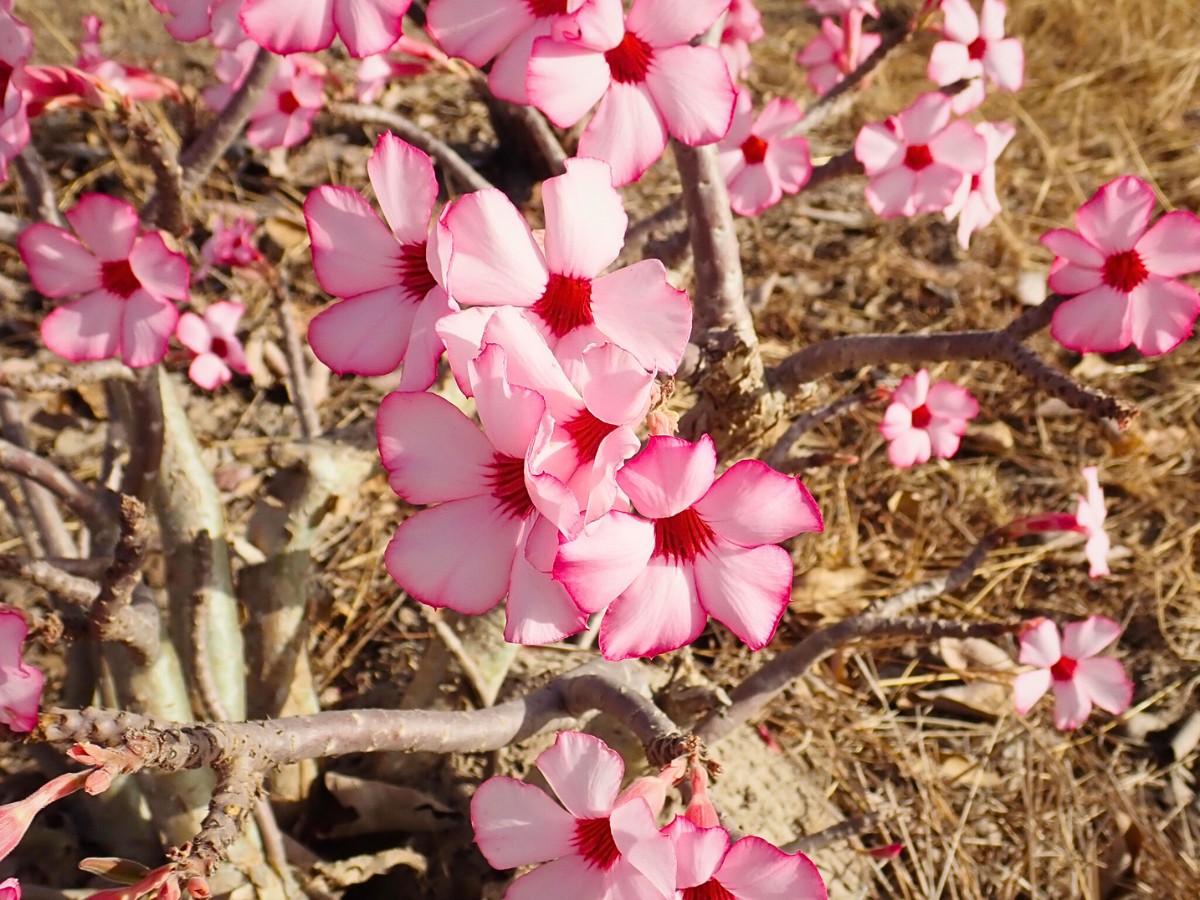
In Africa, the sap of the desert rose plant was historically used to poison hunting arrows due to the cardiac glycosides it contains. So, when handling your Adenium obesum plant, avoid contact between the sap and your skin, as this can cause irritation. Always wear gloves to protect yourself from the toxic sap of this desert rose plant.
You Should Try This Enchanting Ornamental Desert Rose Plant
The Adenium obesum desert rose is definitely a charming ornamental. With alluring flowers, a distinctive caudex, and intriguing adaptability to arid conditions and indoor growing, this plant's unique features and vibrant color palettes continue to attract plant lovers.
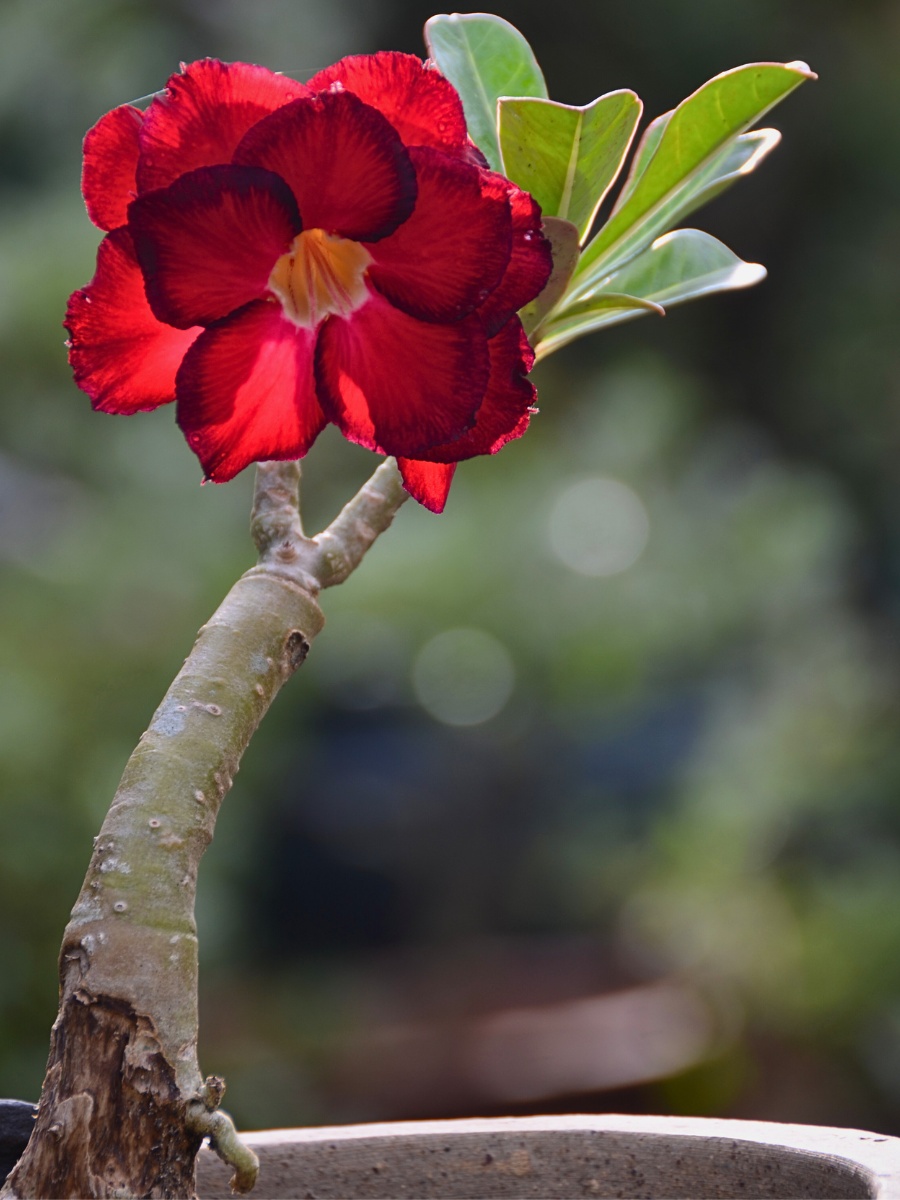
To achieve its full potential, following this comprehensive care guide and fully understanding how to care for your desert rose plants will help you enjoy the beauty of this remarkable succulent and its flowers, whether you grow it as a houseplant or outdoors in your garden.
Featured image by Diego Delso. Header image by Wendy Cutler.

